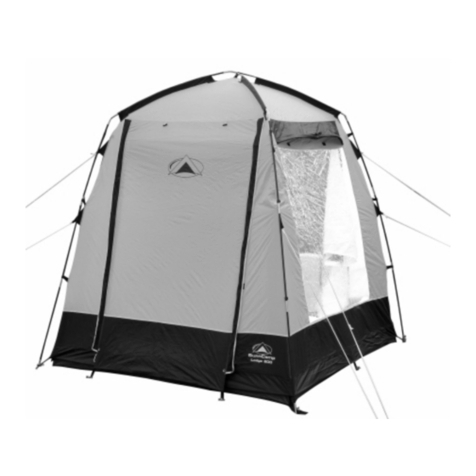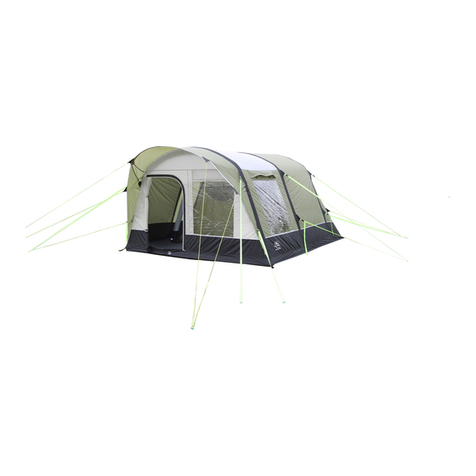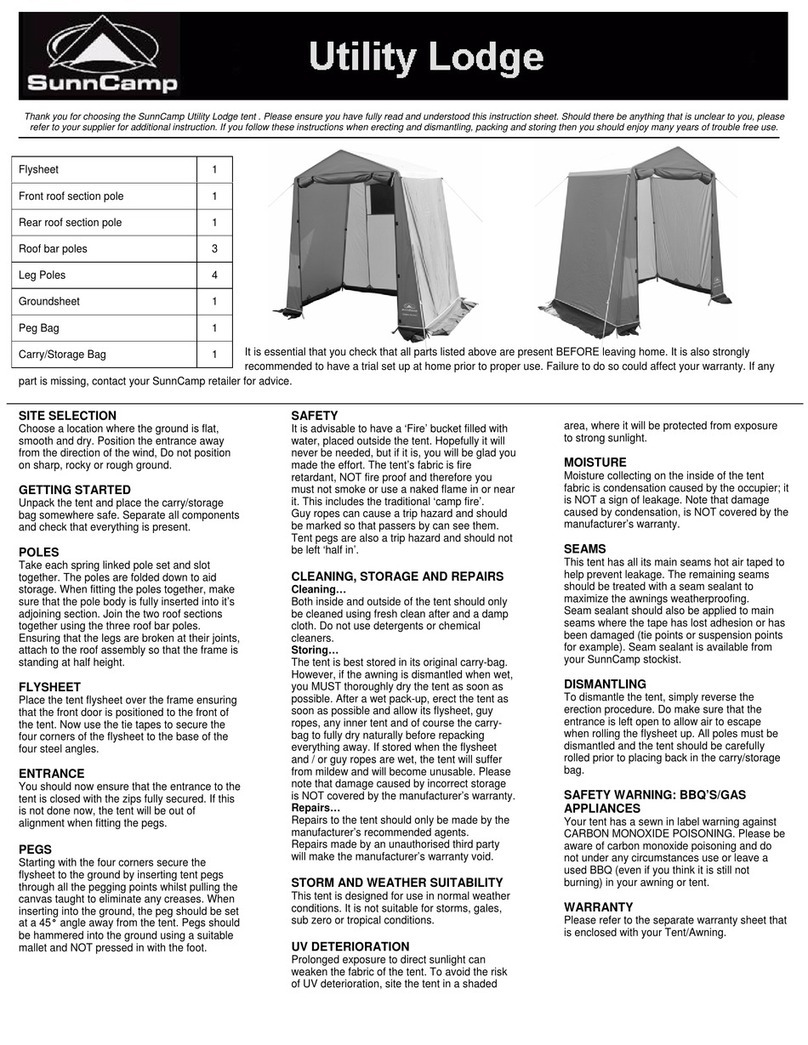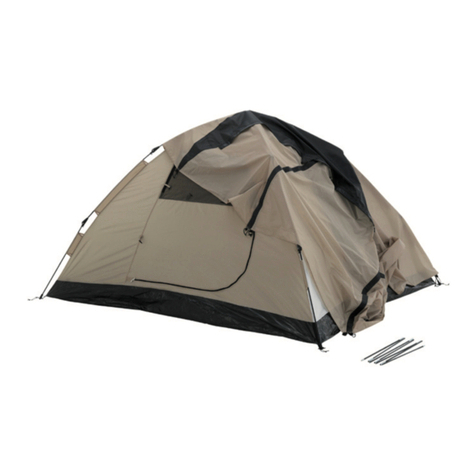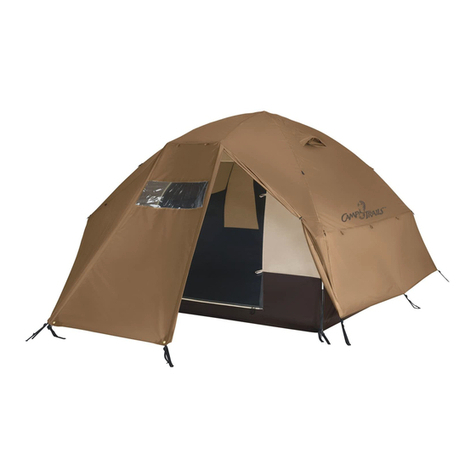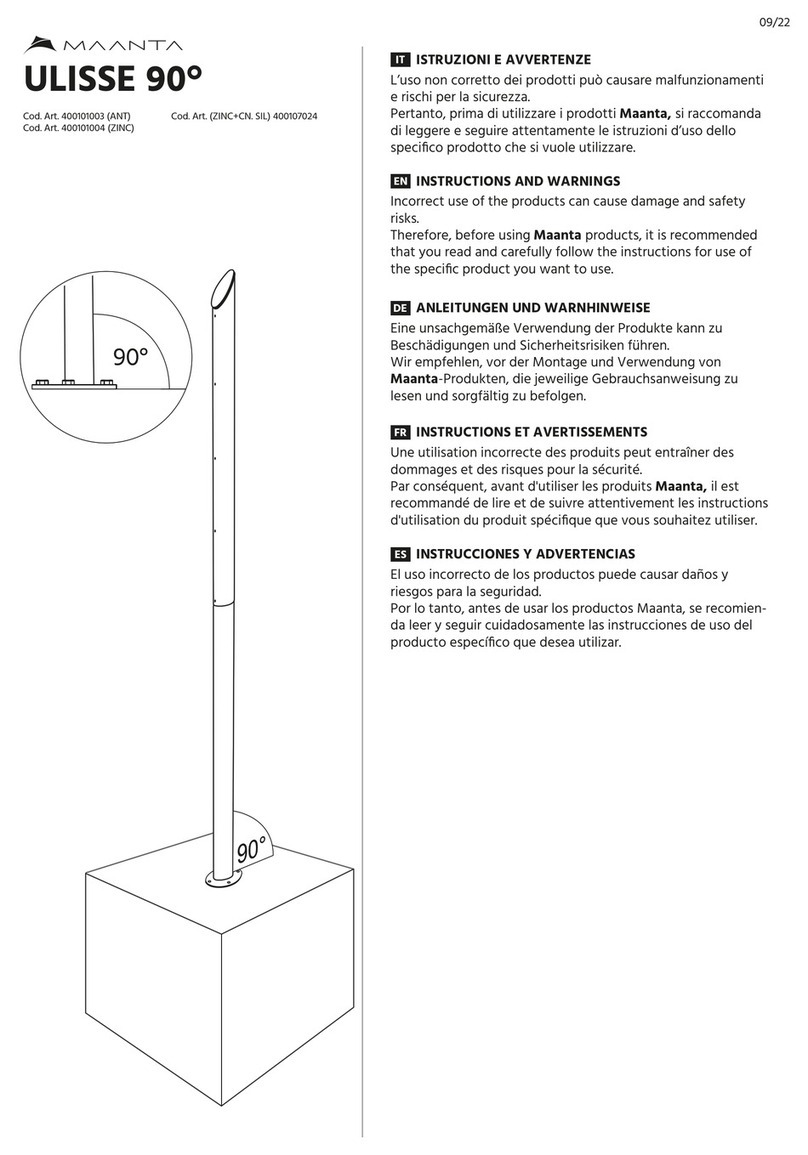General purpose pegs are supplied with this trailer tent and are
suitable in many instances. There are many types of pegs
available and it is up to you to choose the correct peg for the
job. Your sunncamp dealer will be able to give you advice.
The mudwall is located on the inside of the trailer tent awning
and a groundsheet can be laid on top of it in the living area.
These should be clipped on the curtain track and retained by
the curtain tape. Pack curtains separately if they are wet or
even slightly damp to avoid any possibility of colour transfer.
If possible, this should be done when the trailer tent is
completely dry. Reverse the erection procedure remembering
to unclip the inner tents before folding. Take care to fold beds
and cabin frame in the correct order - failure to do this will
result in damage.
PLEASE TAKE EXTREME CARE WHEN TAKING DOWN
YOUR TRAILER TENT IN WINDY CONDITIONS. DO NOT
TRY TO TAKE YOUR TRAILER TENT DOWN ON YOUR
OWN - GET SOMEBODY TO HELP YOU.
FIRE PRECAUTIONS - REMEMBER, YOUR TRAILER
TENT CAN
BURN. CAMP SAFETY - FOLLOW THESE COMMON
SENSE RULES
• When siting, ensure a minimum distance of 6 metres is
between trailer tents
• Do not place cooking, heating or lighting appliances near
the sides or the roof
• Always observe the safety instructions for the appliances
• Keep exits clear
• Make sure that you learn the fire arrangements on the site
• Never allow children to play near lighted appliances
TRAILER
The sunncamp trailer is designed to be as maintenance free
as possible. The chassis and trailer frame are galvanised to
provide superb corrosion resistance. It is however quite
normal for the finish to dull - this will not affect the
performance or durability of the trailer.
SERVICING
The following service procedures should be carried out at
either the recommend mileage interval or according to time
(whichever occurs first)
Pre Delivery
Check all wheel nuts
Check ball hitch connection
Check road lighting
Check brake operation (if fitted)
20 Miles
Check all wheel nuts
Every 500 Miles or 3 Months and Before Each Journey
Check all wheel nuts
Check condition of tyres
Lubricate jockey wheel
Lubricate tow hitch
Check condition of safety cable
Check road light operation
TYRES/WHEELS
This trailer is fitted with 145 x 10 wheels and tyres. It is
essential for correct operation that the tyre pressures are
checked when cold. Tyres pressures will be found on the
trailer chassis plate. We recommend that the spare wheel is
carried at all times.
LOADING
Check the chassis plate for the actual weights for your trailer.
Do not exceed the MGW and ensure that the load is equally
distributed on the trailer. This trailer is designed to be nose
heavy so improving the towing characteristics. Check the
nose weight against the recommended nose weight for your
towing vehicle. Ensure that the trailer is not loaded too
heavily at the rear.
STORAGE
During long periods of inactivity and during the winter
months, it is essential that all canvas parts, mattresses,
curtains, etc. are removed from the trailer and stored in a
warm dry environment. Failure to do this may result in
mildew damage to these parts. If these parts are left
attached to the trailer we recommend frequent checks and
airing of the unit to prevent damage from mildew. The cabin
canvas is easily removed from the cabin frame.
If possible garage your trailer body whenever possible. If
stored outside protect the unit, especially the transit cover.
Beware of condensation forming either under any protective
cover or under the transit cover itself.
If possible, raise the tyres off the ground to prevent damage
to tyres but do not support the weight on the corner legs.
Protect the 7 pin plugs and socket with a liberal coating of
petroleum jelly.
CLEANING
Cabin Canvas/Awning Canvas:
Clean only with pure water and a soft cloth or brush
Inner Tents/covers/curtains/linings:
Dry clean only
Trailer:
Non abrasive automotive cleaners
Stainless steel kitchen unit:
Non abrasive household cleaner
MUDWALL
CANVAS
This should always be packed away and stored completely
dry. If you have to take your trailer tent down wet then, at the
first possible opportunity, PITCH THE TRAILER TENT TO
DRY IT. DO NOT LEAVE IT PACKED WET. Damp storage
will cause mildew and may result in colour run.
IMPORTANT: If your trailer tent is wet do not pack curtains
with canvas as this may result in colour transfer.
NEVER clean your trailer tent with anything other than pure
water and a soft brush. NEVER USE detergents, petrol,
turps etc.
It may be necessary to re-proof your canvas at sometime.
The time will vary according to the amount of use and the
prevailing conditions. There are many good waterproofing
agents available - see your sunncamp dealer for details.
NEVER use aerosols or other chemicals close to your trailer
tent canvas.
FRAME
Take care not to put excess strain on your frame. When
erecting or dismantling, make sure that you do not over
extend the spring links. Should this happen, your sunncamp
dealer will be able to supply replacements. Should your
frame require any lubrication of moving parts we advise the
use of a silicon spray, DO NOT USE ANY OIL BASED
PRODUCT!
KITCHEN (SE Models only)
Ensure that the legs of the kitchen are securely tightened.
The front panel of the kitchen should be removed by lifting
upwards with the kitchen lid/s open. The Holiday has a split
kitchen top. Only use the gas cooker with both lids open.
GAS CONNECTION (SE Models only)
The double burner & grill are designed to operate from
either
butane or propane using regulators of the following
operating
pressures:
Butane - 28 mbar
Propane - 37 mbar
The kitchen has a push on gas hose fitting and the gas hose
(not supplied) should be fastened using a suitable hose clip.
Connect and operate the regulator according to the
manufacturer’s instructions.
